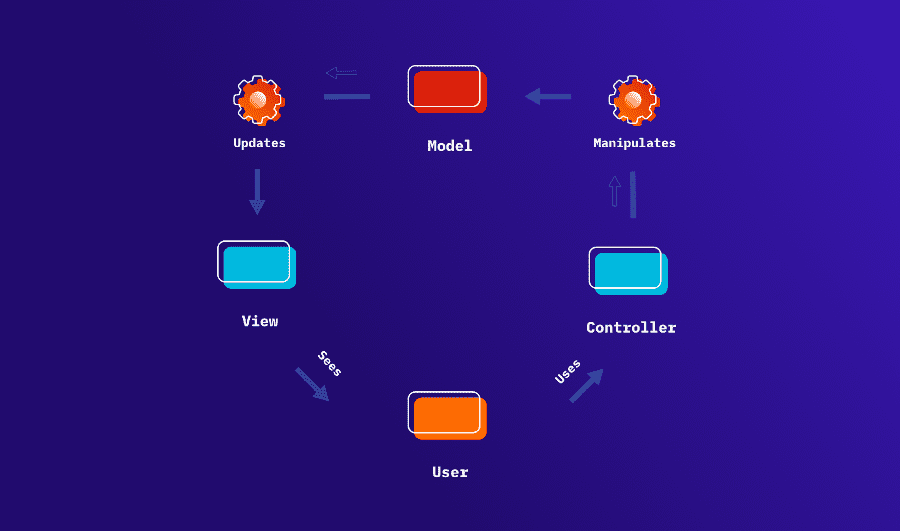What is PHP Framework Symfony? Explained for executives
Welcome to our Explained for Executives series - software development topics explained in simple words for business owners, CEOs, and managers.
Building a website or a web app from scratch is a complex and challenging issue. It requires time, commitment, and patience, as coding is known for its repetitive and sometimes monotonous nature. PHP Framework Symfony is something that might just come to aid. But what exactly is Symfony? Or framework? Or even PHP? Putting first things first - let's dive right into it and find out.

What is PHP Framework Symfony?
What is PHP?
Before we get to Symfony itself, let’s begin with PHP. It stands for "PHP: Hypertext Preprocessor," and it is a programming language most commonly used to develop web-based software applications. Its very first version was launched in 1994, and since that time, PHP has grown into one of the most popular programming languages. It helps manage dynamic content, databases, or session tracking. PHP is widely renowned for being extremely versatile due to its remarkable ability to be combined with other programming languages, such as C. It is also recognized for solid compatibility with database management systems, like MySQL or SQLite. What's even more critical, PHP is open-source software and free-to-use. In order to use this language more efficiently, it's often organized with MVC (Model View Controller), which also happens in the PHP Framework Symfony case.
Framework
Since you know what PHP is, let’s learn why you might want something like a framework to use it. Framework can be shortly described as a platform that provides generic, selectively chosen functionalities aimed at helping developers create web-based projects or software. It is similar to a set of tools one might need to build a house. Let's compare a single functionality to a simple hammer. With a framework, you can reuse components and modules adjusted to your very needs over and over again, allowing you to save both time and resources. Like using the same hammer every time you need it. Without framework functionalities, a developer would sometimes have to write the same base code repeatedly, hence building a hammer every time they need one. It sounds easier with a set of tools provided by the framework, doesn't it? What's even handier, you don't need to carry all the tools with you all of the time. Framework Symfony allows you to pick any set of modules you currently need to design your website or application. Or, if that's what you demand, you can deploy only one of them. Forget about the plethora of functions you don't use but still see in front of you. Take only what you need. Or, if you can't find it, add whatever you need!
Symfony
Now, what is Symfony at last? It is still a relatively new PHP framework and reusable PHP components provider. It exists as a company and a community of over 600,000 developers-users from multiple countries. And that's where the usefulness of Symfony comes from. Due to its flexibility and active community, it has always been meeting the latest trends. Being available under an open-source license, Symfony can be adjusted to the specific needs of every single developer by adding single-handedly any required module of their own. And that's precisely how it works. The size and diversity of the Symfony community create equally diverse possibilities for every user. After all, if you can't find something you need here, you can always add anything custom-designed to your framework.

The Model-View-Controller Architecture
To use PHP Framework Symfony in a more efficient way, it can be structured with MVC pattern. This stands for Model View Controller, and it is an architecture pattern, which helps you design a website or web app in a much more structured, layered, and logical way. It does so by dividing your project into three pieces:
- Model, i.e., everything related to databases and maintaining the data itself.
- View stands for components responsible for presenting data to a user.
- Controller, which is an intermediate between the other two. It connects them by sending data from Model to View, or, in other words, processes data, updating it when needed, and explains how it should be presented to the user.
Even though being a bit complex sometimes, MVC allows developers to divide the software into smaller components and deploy, maintain, and test each one of them separately.
The combination of MVC and PHP creates a more user-friendly environment and simplifies the process of coding. Yet, Symfony doesn’t tie you to MVC. Since everyone’s main goal should actually be Separation of Concerns, if MVC is not your personal taste for this, it’s fine. Symfony allows you to use any third-party libraries, such as Doctrine or Propel for the Model or Twig for the View.

Why should you use Symfony?
Flexibility of framework
Framework Symfony doesn't tie a user to all its functionalities. Instead, it allows us to use only the very needed ones. You can choose only the tools you need without having to browse every single time through the rest of them. The adaptability of Framework Symfony helps users speed up the pace of work without making it unnecessarily complex or heavy.
Fast performance
Symfony is considered to be one of the best, if not the best, since it doesn’t require a lot of resources to run efficiently. You can also speed up the performance, optimizing your servers and apps, with a help from Symfony support. It might be worth mentioning that it also consumes less memory while still allowing the development of apps at high speed.
User-friendly
PHP Framework Symfony is accessible to a newcomer and an expert at the same time. This was achieved with professional support from the company and a huge community, working together and developing the possibilities of Symfony for every user. That's why it's considered to be a friendly environment even for beginners.
Expandability of Framework
Using the Symfony framework, you can work on a system of bundles, each one with its specific functionality. You can reuse every bundle you added and share every single one with the Symfony community. This system allows you to change even the very core of your framework behavior without reconfiguring everything from the start.

Innovation
It is commonly known that Symfony tends to follow the latest trends. But it reaches even further. To simplify developers' work, the company and the community around it constantly seek ways to improve things. Sometimes, even outside the PHP world. For example, Symfony implemented into their PHP environment "dependency injection." This is a design pattern used in software engineering, coming from a different programming language: Java.
References
Many sites and applications are using and trusting Symfony because of its stability, sustainability, and compatibility among all its versions. The company offers long-term-supported versions, where the support period can last up to 3 years. One of the most significant Symfony users is Facebook. For example, the API of Facebook Ads is running on Symfony components.
Who uses Symfony?
Since almost 79% of all websites use PHP, Framework Symfony often comes around as extremely handy. Therefore, many different companies have been or still are benefiting from their services. For example, in 2015, Spotify tweeted about using Symfony to manage almost 286 million active users accounts. Another example is BlaBlaCar, with 87 million accounts whose frameworks helped with creating a booking app. A similar story concerns Trivago. A popular hotel-comparing website offers a variety of functionalities and filters, thanks to Symfony. Dailymotion, a streaming service, resigned from its framework in order to use a more flexible and efficient Symfony Framework, which is another example of its advantages in practical use. A variety of companies from different branches do the same. Other prominent examples are Auchan, BBC News, Sainsbury's Magazine.

Faster and easier way to success
As mentioned in the beginning, building an app or a website is not a piece of cake. It's worth looking into some ways to help yourself in the process. PHP Framework Symfony is just one of them, but, undoubtedly, one of the best as well. Structuring your PHP programming work with the advantages of Model-View-Controller can save you much time. Using Symfony's Framework and its reusable components can be just as cost-effective as time-efficient. After all, why would you build your hammer whenever you can pick your personalized set of tools created by a community of dedicated developers?
Need help with your software project? Want to take your developmeny to the next level? We are here to help, providing Symfony development services since 2010.



